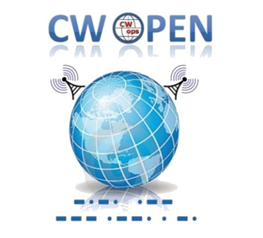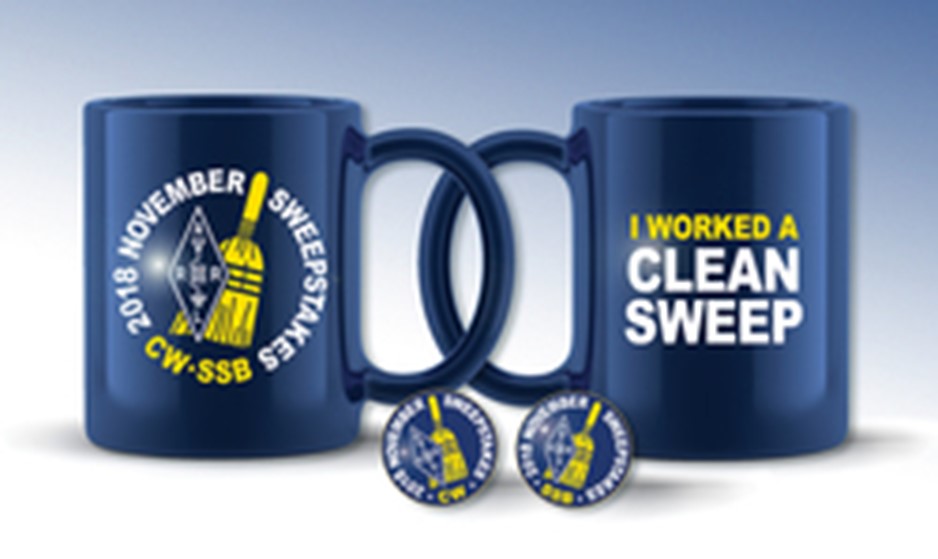May the flux be upon us!
The buzz is definitely all about Cycle 25 getting underway and the long-delayed anticipation of plentiful long-distance QSOs on the upper HF bands. Endless tales of “back when 10 was open around the clock” and “working the world on bedsprings” do get a little tiresome after a while, but is there some hope for contesters this fall?
While 20 meters, dubbed by many the “Queen of the DX Bands,” offers openings around the world even at the bottom of the solar cycle, the 17, 15, 12, and 10 meter bands are where smaller stations can really compete. What will Cycle 25 deliver on 15 and 10 meter action in the upcoming contest season? It’s easy to succumb to “irrational exuberance” with each new blemish on the solar disk. It might be worth reading Frank Donovan, W3LPL’s article, “What to Expect During the Rising Years of Solar Cycle 25” in the May 2021 issue of QST. Frank tempers enthusiasm with experience to put a realistic spin on expectations in the near future.
In the meantime, you can really tell that fall is the season from the explosion of September contests on the WA7BNM Contest Calendar. Freed from the tyranny of summertime absorption, contesters in the Northern Hemisphere eagerly anticipate fall’s lower noise levels. Our friends from south of the equator get what we experience in the spring at the same time. This can make for a lot of fun across the HF bands.
In general, fall conditions will open more to the north on the higher HF bands due to increasing solar flux as Cycle 25 begins to pick up steam. While flux isn’t too high, though, the lower HF/MF bands will open nicely to South America, Africa, and Oceania. There is a nice window of lower atmospheric noise in both hemispheres you can take advantage of for a short while. Keep an eye on the geomagnetic dashboard such as at the National Oceanic and Atmospheric Administration’s Space Weather Prediction Center or at SolarHam. Late September and October are when the Earth’s geomagnetic field is aligned for maximum coupling to the solar wind, which can create geomagnetic storms and poor conditions!
Use VOACAP Online to look for the right times to tune for certain areas by using the reliability graphs. I discuss using VOACAP Online in my previous OnAllBands article, “Propagation Paths–The Long and Short of It.”
Snapshot Contests
There are lots of opportunities for HF contesting during the fall, not only on the weekends but on weekdays, too; check out the one-hour CWops-sponsored CW Tests (CWT) every Wednesday at 1300-1400 UTC, 1900-2000 UTC, 0300-0400 UTC, and 0700-0800 UTC. Not only do you keep your code speed up, these short exercises are a great way to judge propagation and get a feel for current and seasonal conditions. And you don’t have to use up all your ham radio points to get on for an hour now and then! (If you’re not a contest-grade CW operator—yet—CWops programs like CW Academy will help you get there.)

While they’re not contests, per se, there is so much activity from the Parks On The Air (POTA) community, as well as Summits On The Air (SOTA), Islands On The Air (IOTA), Worldwide Flora and Fauna (WFF), and other groups on a daily basis. You can treat these mini-pileups as a sort of low-speed, continuous contest. Special events can offer a lot of activity, too, mostly on the weekend. You can find these on the 1´1 call sign web page.
Domestic Contests
Next, broaden your horizons to contests that span North America or whatever continent you may inhabit. These are great opportunities for smaller stations to make a lot of QSOs and work on awards like Worked All States. Are you a QRPer or enjoy putting a smile on a QRPer’s face by pulling their signals through the airwaves? Low-power stations will take to the airwaves en masse for the October 9 QRP ARCI Fall QSO Party.
State QSO Parties close out their annual run with a bang in the fall. There are a sweet 16 in September and October before the state agenda shuts down for the holidays. The three biggest state QSO parties are Texas (September 18-19), California (October 2-3), and Pennsylvania (October 9-10). These are great opportunities to judge propagation on the upper bands and optimize your lower band antennas before…
…the ARRL’s November Sweepstakes (CW: November 6-7, Phone: November 20-21), the oldest domestic contest of all. It is a unique contest because of its long exchange (based on a radiogram header), the limit of working a station only once in the contest, and the fixed number of multipliers (the 84 ARRL and RAC sections). You can learn more about how to do well in Sweepstakes by reading the Operating Guidelines. Plus, you can get an activity pin or a cool coffee mug for working all of the sections—a Clean Sweep!

Targeted Contests
Mixed in with the State QSO Parties are the country-level equivalents, contests where everyone tries to contact a specific country. The U.S. and Canada have their own version in the wintertime ARRL DX Contest. Focusing on a single country is a great way to learn about propagation to that part of the world. If you have limited antenna choices, you can optimize your antenna by aiming it right at the country or some other technique. Single-country contests are great opportunities to fill in your band-mode DXCC Challenge or CQ DX Marathon.
In September and October, put these on your calendar:
- Scandinavian Activity Contest (CW: September 18-19, SSB: Oct 9-10)
- Belgium (UBA ON) Contest (SSB: October 3, CW: October 10)
- Oceania DX Contest (SSB: October 2-3, CW: October 9-10)
All Asia Phone (September 4-5) and Worked All Europe (September 11-12) will have past when this article is scheduled to be published, but they are good early fall contests. Try the Japanese DX Phone Contest and OK/OM CW Contest run in between the Sweepstakes weekends on November 13-14.
A contest that isn’t targeted at a place but at a mode is CQ World Wide RTTY on September 25-26. If you haven’t tried RTTY but are set up for FT8, give this oldest of the digital modes a try. There is great advice for setting up and operating on RTTY at the AA5AU website.
The Big Ones
Finally, the really BIG contests:
- CQ World Wide SSB (October 30-31)
- CQ World Wide CW (November 27-28)
Sponsored for decades by CQ Magazine, you can tell a contest is really big when no other contests for that mode are scheduled on the same weekend! They clear the calendar while filling the bands. I can hear some of you groaning about that. Those weekends are a great opportunity to have relaxed contacts on the “other” mode with few huge pileups. In some years more than 30,000 unique call signs are logged, making CQ WW contests some of the planet’s largest sporting events.
There are more countries active during these two contests than any other throughout the year. It is quite possible to achieve WAZ during the “World Wides,” and the bigger stations will approach 5BDXCC in a weekend. In fact, the best time to try for DXCC on multiple bands during the contest is when a solar cycle is rising or falling; both the high bands and low bands are open “enough” to push the total to 100.
For smaller stations, why not pick a band and spend the weekend learning it from open to close? By doing a single-band effort, you’ll be able to listen for the unusual openings—long-path, over-the-pole, skew-path—that an all-band operator must forego in order to focus on higher contact rates. I love 20 meters, myself, but as Cycle 25 gets going, 15 meters and soon 10 meters will have plenty of stations to work.
Straddling the Cycle
Speaking of single bands, the fall contest season concludes in December with a few single-band events running before the winter solstice. After the five-week contestpalooza of CQ WW SSB, Sweepstakes CW, Sweepstakes Phone, and CQ WW CW, it’s time for a little less frantic dial-spinning. The December contests “span the cycle” from 160 meters to 10 meters:
- ARRL 160 Meter Contest (December 3-5)
- ARRL 10 Meter Contest (December 11-12)
- Stew Perry Top Band (160 Meters) Distance Challenge (December 18)
Your log book will be really, really full after a fall season of HF contesting—it’s time for a break. Watch for those results and I hope you see your scores moving up on the leaderboard!


Pingback: Remember, Now Is Ham Radio Contest Season! | GOTAhams